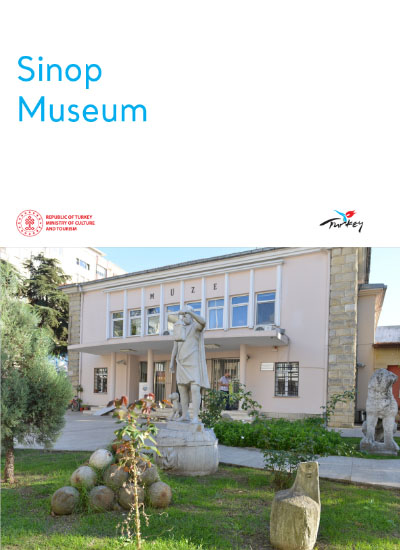The first museum activities in Sinop started in 1921 with the preservation of historical artefacts discovered in and around the city in a school. In 1932, the artefacts were relocated to Süleyman Müinüddin Pervane Madrasah. The museum was inaugurated in 1941 and subsequently relocated to its current premises, constructed in 1970. The museum's extensive collection of artefacts is displayed in various sections, including the corridor, small finds hall, stone artefacts hall, amphora hall, coin section, icon hall, and garden. In the corridor, visitors can view statue heads and statues, as well as a stone inscription containing a treaty between the ancient cities of Sinope and Heraclea Pontica (Black Sea Ereğlisi) in the 4th century BC. In the small finds hall, a variety of artefacts are exhibited, including pots and pans, metal tools, vases, terracotta figurines, terracotta architectural pieces from the Temple of Serapis, glass artefacts, grave finds and similar artefacts. These artefacts span the period from the Early Bronze Age to the end of the Byzantine Age and are exhibited in chronological order. The Mosaic Panel, which was discovered in Meydankapı and contains seven Muses, represents an important component of the exhibition. The oldest tomb stele samples of Anatolia are exhibited in chronological order in the stone works hall. In addition, the marble "Lions Smashed Deer" group, which is thought to belong to a funerary monument, and the sarcophagus of a sailor are among the rare finds worthy of note. In the Amphora Hall, the findings of amphora production workshops and furnaces unearthed during the joint Turkish-French excavations in Sinop Centre, Karakum and Demirciköy between 1994 and 2000 are exhibited. During the Hellenistic, Roman and Byzantine periods, Sinop made a significant contribution to its economy by producing amphorae, bricks and tiles. In this section, in addition to examples of amphorae, an amphora furnace, which was partially constructed using original materials in accordance with the information obtained from the excavations, is exhibited. There is also a panel illustrating the commercial distribution area of Sinop amphorae. In the coin section, examples of the first silver coins minted by Sinop, city coins, Ordu Treasure, Gelincik Treasure, Seljuk Treasure and Byzantine Treasure are exhibited. In the icon hall, surviving icons from churches in and around Sinop in the 19th century are exhibited. Sinop Icons were created by plastering plaster on panels made of chestnut wood, and in some cases, using a combination of cloth plaster, paint and gold gilding. These icons depict Jesus, Mary, John and other saints and religious events. Sinop Icons exhibit notable similarities with the icons found in 19th-century Russian Churches and Greek Churches in Cyprus. The garden of the museum is home to a variety of stone and marble architectural elements, milestones, tombstones, sarcophagus fragments, sculptures and mosaics. The remains of the Temple of Serapis from the Hellenistic Age contribute to the garden's distinctive character.
SİNOP MUSEUM


